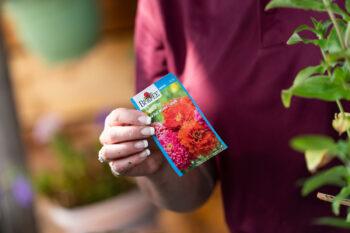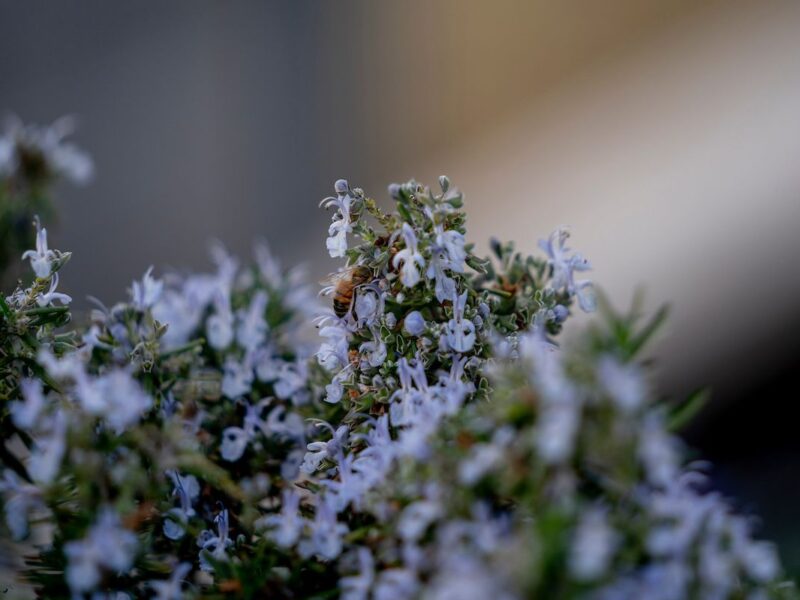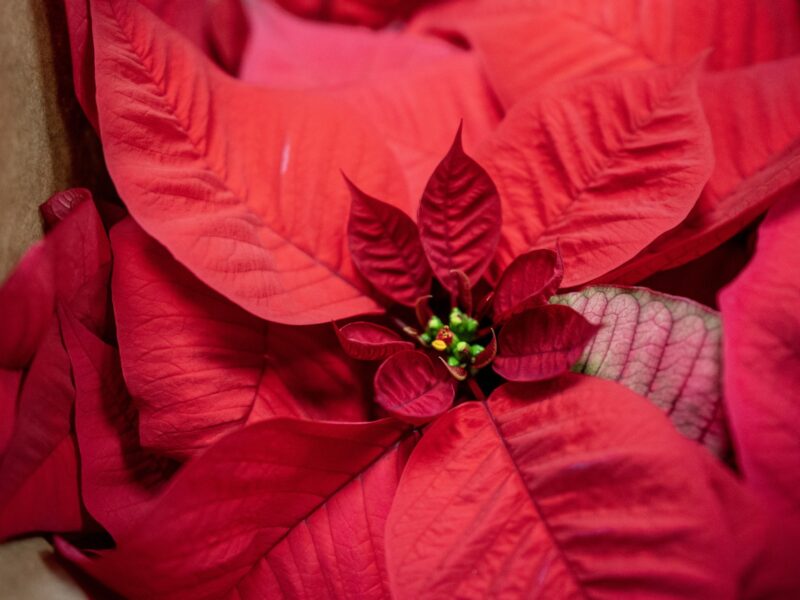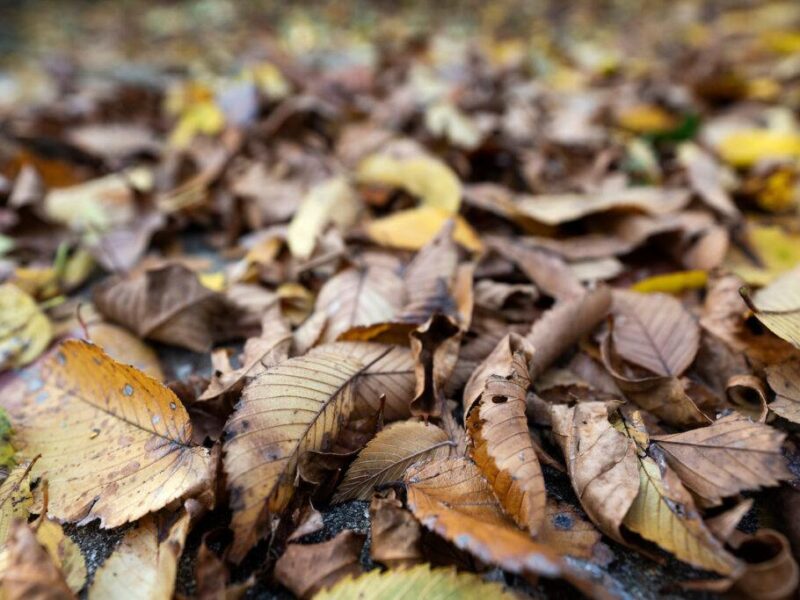Don’t Be Caught Off Guard By Mild Temperatures, Make Garden Resolutions For 2024

If you have yet to make your New Year’s resolutions or have already decided you do not want to keep a resolution like spending more time in the gym, consider flexing your green thumb instead.
A Texas A&M AgriLife Extension Service expert offered ideas for garden-centric resolutions as well as yard and landscape tips for January.
From planning vegetable gardens to landscaping perennials to preparing for annuals, there are actions you can resolve to take right now to help your garden perform throughout the growing season, said Dr. Larry Stein, AgriLife Extension horticulture specialist and associate head of the Texas A&M College of Agriculture and Life Sciences Department of Horticultural Sciences.
Ideas For Garden Resolutions
If you need additional motivation to have garden resolutions in 2024, keep in mind that even light gardening and yard work can burn around 300 calories an hour and requires just a commute to your backyard to workout. Gardening also is great for managing stress and improving mental health.
Stein has some ideas and resolutions about choosing varieties, spacing and care as well as water — a much-discussed topic for Texans.

January is an ideal time to plan how to maximize rain and water in your yard year-round, Stein said. Planning ahead can reduce the impact of drought and help protect plants in case of water restrictions during the dog days of summer.
“A big challenge in Texas is when we get rain, we often get too much at the same time and a lot of it goes to waste,” he said.
- Resolve to catch water. Although a more elaborate water catchment system can make the most out of the moisture your home receives, even a 5-gallon bucket placed at a gutter’s downspout or a dripline can make a big difference in a garden.
- Resolve to research other water-saving methods to help your garden, such as raingardens or furrow diking. Furrow diking is typically used for agronomic crops, but it can be adapted for use in home gardens. By creating earthen channels to collect water, it helps prevent runoff and maximize every drop of water.
- Plant what will grow in Texas. Texas Superstar plants are designed to use less water and thrive in the conditions found across the state.
- Don’t grow plants or trees too close together. They will compete for resources including nutrients and water. Fewer plants and trees equal healthier and hardier plants and trees. A good rule of thumb with new plants is to follow the nursery tag suggestions for spacing. Trees should have canopies that can provide full shade from the direct sun. Smaller or incomplete canopies are typically an indication your trees are too close together. Don’t be afraid to remove established plants to help others thrive.
- When using a new product, make sure to leave an untreated area as a “check.” If you apply a new fertilizer, pesticide or other product to plants, some plants should be left untreated in order to monitor how they compare to the plants receiving the product. You don’t want to waste future time or money on a product that doesn’t work.
January Garden Guide
Watch out for changing weather
“Most Texas gardens and landscapes have experienced a warmer-than-usual season so far,” Stein said. “But gardeners shouldn’t let the mild temperatures lull them into thinking that this weather will continue.”

Despite the mild winter, gardeners need to be wary of sudden and extreme changes in temperatures, as this is when landscape plants that cannot be sheltered are the most vulnerable.
“So, if it is 85 degrees one day and predicted to be 18 degrees the following morning, that can be a challenge for plants,” he said. “Make sure plants are well-watered going into such an event.”
Care for cold-weather annuals
Continue to water and fertilize cool-weather annuals such as snapdragons, Bells of Ireland, stocks, larkspur, pansies, violas and sweet alyssum to encourage the best blooms. Even if you are in an area where some of these plants took a hit with a recent cold, they will recover if you take care of them.
Apply slow-release fertilizer to pansies and other cool-season annuals. Distribute 5 pounds of cotton seed or alfalfa meal per 100 square feet of bed area or use commercial slow-release fertilizer products according to label instructions.
Transplant dormant plants
Now is an excellent time to transplant trees and shrubs while they are dormant. When buying plants, the biggest is not always the best, especially when dealing with bare-root plants. The medium-to-small sizes, around 4-6 feet, are usually faster to become established and more effective in the landscape than the large sizes.
Don’t fertilize newly set out trees or shrubs until after they have started to grow, and then only very lightly the first year.
Pick out your vegetables and flowers for spring
Make flower and vegetable garden plans now before the rush of spring planting. Not only will early planning pay off in improved plant selection, but it is also a fun way to spend a winter day paging through garden catalogs and books.
You can begin sowing seeds in flats or containers to get a jump on plant growth before hot weather arrives. Petunias, begonias and impatiens should be sown in January or February. Warm-temperature plants such as tomatoes, peppers, marigolds and periwinkles should be sown in late January or early February.
Also, you can prepare beds and garden areas for spring planting. Till in several inches of compost, composted pine bark or similar material.

Check narrow-leaf evergreens for pests
Check junipers and other narrow-leaf evergreens for bagworm pouches. The insect eggs overwinter in the pouch and start the cycle again by emerging in the spring to begin feeding on the foliage. Hand removal and burning of the pouches reduce future damage.
Know when to cut back, prune
Herbaceous perennials and hardy ornamental grasses may be cut back at this time. It may be difficult to assess the extent of freeze damage on citrus and semi-tropical plants until warm weather arrives. When new growth begins, damaged material can be removed.
Hold off on pruning bush roses and grapes until mid-February or early March in northern parts of the state.
Hang onto holiday plants
The life of poinsettias and other holiday-season plants can be prolonged with proper care. Keep the soil moist but provide drainage so that excess moisture can flow from the pot. Keep the plant out of range of heating ducts and away from heating units. Keep in a cool room at night, preferably at 60-65 degrees.
This article by Susan Himes originally appeared on AgriLife Today.





